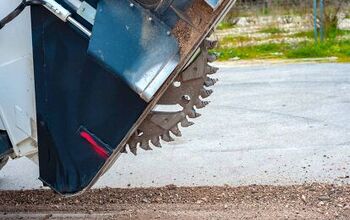Top Ways To Help Your Citrus Trees Produce More Fruit

Citrus trees are fantastic to grow in subtropical climates and other regions with mild winters. They are usually compact and relatively self-sufficient once established. They also provide numerous benefits, including a wealth of delicious fruit. While most citrus trees produce fruit, harvests can vary significantly year to year. There are, however, several ways you can encourage your citrus trees to produce more fruit year after year.
To help your citrus trees yield more fruit, you must ensure they get as much sun as possible. Plant them in a warm location with nutrient-rich, well-drained soil. Add a thick layer of mulch to protect roots and assist in water retention. Prune the trees regularly, and fertilize as needed. Transplant potted trees into larger containers as they grow, and keep your trees protected from cold weather.
A citrus tree is a great asset in any yard. its blooms give off an intoxicating fragrance, and later, it yields fruit you can eat. If, however, you find that your tree is dropping fruit early or produces fewer ripe lemons, oranges, or grapefruits than you were hoping for, keep reading. Below is a list of all the best ways to maintain a healthy citrus tree and encourage it to grow more fruit than ever before.
13 Ways To Encourage Your Citrus Trees To Produce More Fruit
1. Help The Tree Get Lots Of Sunlight Daily
Citrus trees need a lot of energy to produce fruit. Some of this energy comes from water and soil, but the bulk of this essential fuel comes from the sun. Citrus trees need as much sun as possible. A minimum of six to eight hours of full sun is ideal, and typically, the more sun the better.
To help your citrus tree get more sun, first ensure you choose an ideal spot. Avoid low-lying areas and locations that cast afternoon shade. Instead, opt for hills with sun exposure. If there are tall branches above that cast shade on your citrus tree, remove them.
2. Choose The Right Type Of Tree For Your Yard
There are hundreds of kinds of citrus trees you can choose from. There are many types of citrus, of course, but these trees can also vary in size and blooming cycle.
Full-size trees can yield a plethora of fruit, but require space and time. Grafted trees are more common, especially dwarf trees. They are small, easy to manage, and produce fruit in roughly three years.
Some trees have flowers that bloom in the spring, while others bloom in the summer and fall. Ensure you select a citrus tree with a growing cycle that complements your climate. The happier your specific tree is with your climate, the more fruit it will produce.
3. Ensure There Is Proper Soil Drainage
Great soil drainage is crucial for all citrus trees. Most citrus trees love water, but can suffer from waterlog and root rot. To avoid the risk of root rot, you must plant a tree in well-drained soil. If you live in a region with clay or compacted soil, consider growing your citrus tree in a large container, as this allows you to control soil drainage.
4. Plant Your Tree In A Warm Spot In Your Yard
In addition to sunlight, citrus trees like warmth. If you live in a tropical or sub-tropical climate, you don’t have to think about this too much (except during a rare cold snap).
If, however, you live in regions with mild but distinct winters, you must place your citrus tree somewhere warm. An area with afternoon sun, and even near reflective surfaces, can help. The warmest place in your yard works best.
5. Water Your Tree Consistently
Citrus trees require consistent watering. Consistent watering does not mean constant watering. Soak your tree whenever the soil is dry, but don’t water it when the soil is already moist. If your tree is experiencing drought or flood-like conditions, it will go into survival mode.
One of the first stages of survival mode for fruit trees is to drop blossoms or any fruit that’s growing on the tree. This can potentially wipe out your entire fruit crop for the year.
6. Surround The Tree With A Thick Layer Of Mulch
Since many citrus trees have some fibrous roots that are exposed just below the ground, you must protect them. A thick layer of natural mulch will help keep your citrus tree strong and can encourage it to grow more fruit.
For one, mulch will protect roots by keeping them warm and moist. Furthermore, all natural mulch eventually breaks down, which releases vital nutrients into the soil. This slow release of nutrients helps feed your citrus tree, even when you haven’t fertilized it in a while.
7. Protect The Tree From Cold Weather Damage
Cold weather can wreak havoc on your citrus tree. Not only can extreme cold completely wipe out an entire fruit harvest, but it can also damage and even kill a tree. Cover your tree and find other methods to protect these plants from overnight frosts.
Even non-freezing temperatures can have negative effects on a citrus fruit tree’s yield. If you live somewhere with temperatures at times in the low 40s or high 30s, consider keeping smaller citrus trees in a container and bringing them inside when it’s cold.
8. Plant Flowers Nearby To Attract More Pollinators
When your citrus tree always has tons of fragrant blossoms, but months later only yields a handful of fruit, then you might have a pollination issue. If your citrus tree is surrounded by grass, but no other plants, this could be the problem. Add additional flowers that are known to attract pollinators to your yard.
If the tree lives mostly indoors, you can hand-pollinate it. Rub a fine-point paint brush on the stamen of each citrus blossom. This will effectively transfer pollen from flower to flower.
9. Periodically Fertilize The Surrounding Soil
Your citrus tree will likely survive and produce some fruit without fertilizing it. But if your goal is to produce more fruit on an under-productive tree, then you should establish a fertilizing regimen.
Fertilize the tree periodically according to the its needs. Both under-fertilizing and over-fertilizing a citrus tree can shock it, and cause it to drop fruit. Finding the right balance can take time, but once you do, you’ll notice higher fruit yields.
10. Regularly Prune The Tree
Pruning your citrus tree annually, and additionally as needed, will help it grow more fruit. If you let your citrus tree grow wild, it will continue to expand outward. This can block the sun from reaching parts of the tree.
It will also spread the energy the tree has to sustain the new branches. By trimming a tree back, it can focus its energy on producing lots of fruit on all the remaining branches.
11. Avoid Alternate Bearing Cycles
Some fruit trees have a habit of producing a ton of fruit one year, and then very little fruit the next year. This phenomenon is known as alternate bearing cycles. To have a consistent citrus crop year after year, consider removing some fruit when it’s still small, especially if you notice a lot more fruit than normal.
Many trees do this naturally. If, however, you notice a pattern of one good year followed by one year with very little fruit, then removing excess fruit when it’s still tiny is a good way to create a consistent crop.
12. Transplant Your Potted Trees Into A Larger Container
When you opt to pot your citrus trees, always use a pot large enough to sustain the tree and its root system. A tree may look healthy, but it won’t produce any fruit if it becomes rooted in the pot.
13. Use Natural Methods To Prevent Pests And Disease
Avoid using harmful pesticides on your citrus tree. This can destroy the entire balanced ecosystem of the tree. Instead, use natural methods. Try to attract ladybugs to your tree if you notice aphids and other insects. You can also use natural sprays and the handpicking method to remove pests.
Summing Up Effective Ways To Help Citrus Trees Grow More Fruit
Citrus trees can provide you with enough fruit to last for months. They are often easy to grow, especially if you live in the right climate. If, however, your fruit tree isn’t producing as much fruit as it should, there are methods you can try to help boost its fruit production.
First, plant it in full sun and well-drained soil. Ensure there are plenty of pollinators nearby, and prune the tree as needed. Purchase the correct type of fruit tree for your climate, protect it from the cold as needed, and cover the roots with a thick layer of natural mulch.
Related Guides:
- What Citrus Trees Can Survive An Annual Frost?
- Top Plants To Grow In Your Garden For Vitamin C
- 12 Types Of Fruit Trees That Thrive In Cold Climates

Tom Gaffey is an expert writer who currently resides in Washington D.C. Tom has a passion for real estate and home improvement writing, as well as travel and lifestyle writing. He lived the last twelve years in Hawaii where he worked closely with luxury resorts and event planners, mastering his knowledge of aesthetics and luxury products. This is where he found his passion for home improvement and a keen interest in DIY projects. Currently, Tom resides in Washington D.C, and also working on his debut fiction novel.
More by Tom Gaffey














![10 Best Scroll Saws for 2022 [Ultimate Reviews & Buyer's Guide]](https://cdn-fastly.upgradedhome.com/media/2023/07/31/9070684/10-best-scroll-saws-for-2022-ultimate-reviews-buyer-s-guide.jpg?size=350x220)








![12 Washing Machine Brands to Avoid [with Recall Data]](https://cdn-fastly.upgradedhome.com/media/2023/07/31/9075781/12-washing-machine-brands-to-avoid-with-recall-data.jpg?size=350x220)



